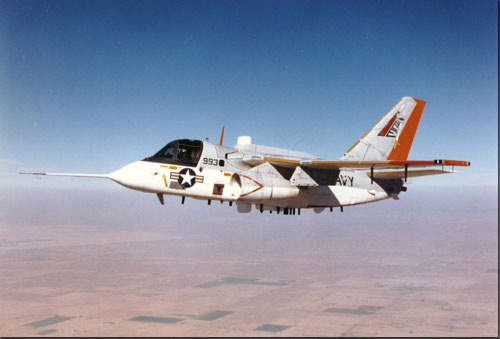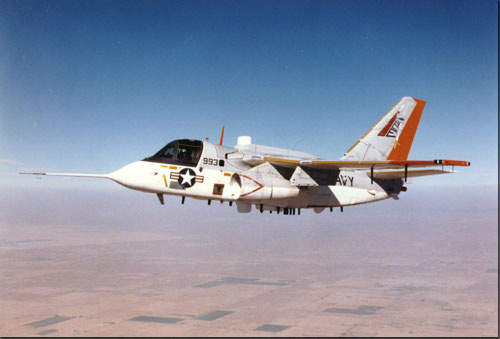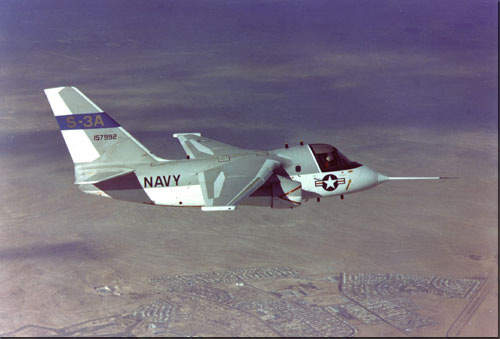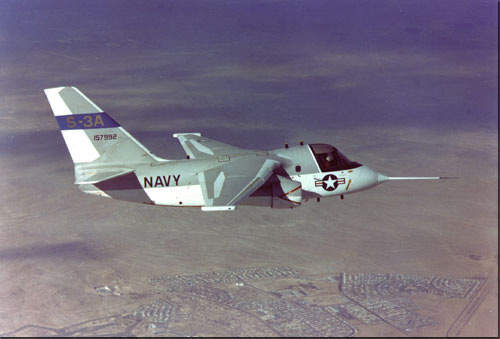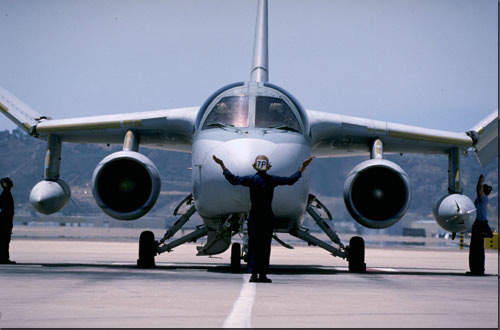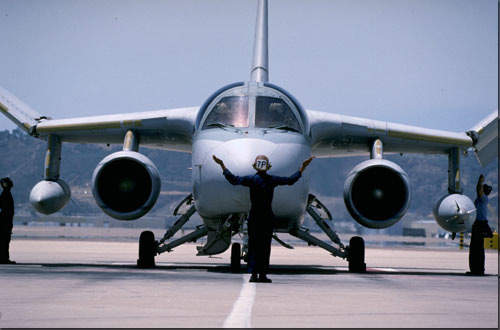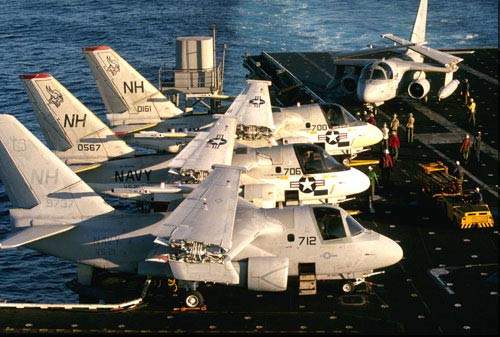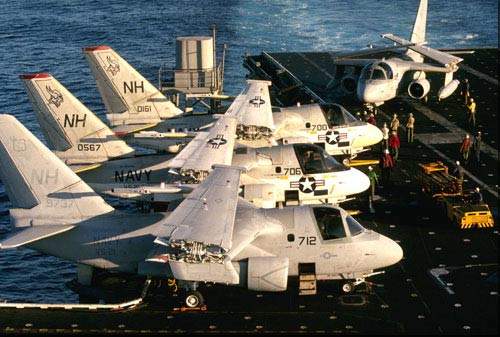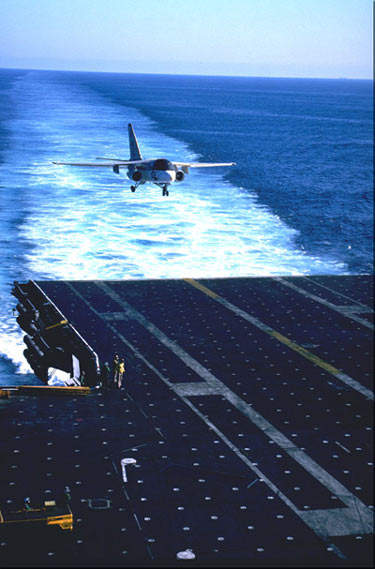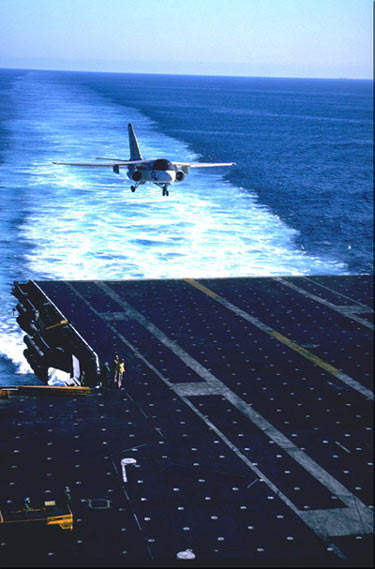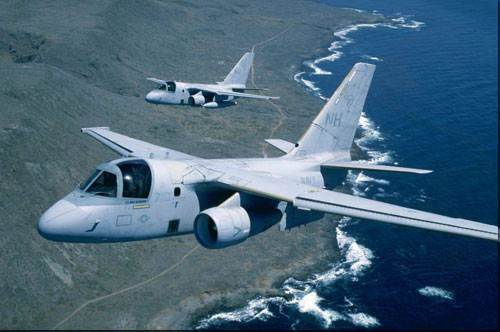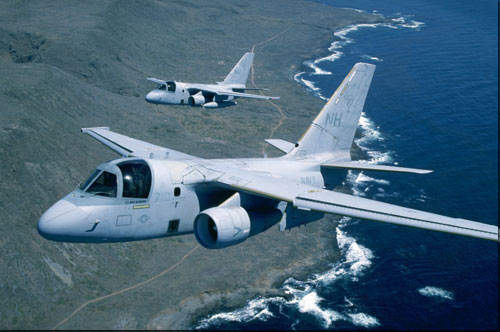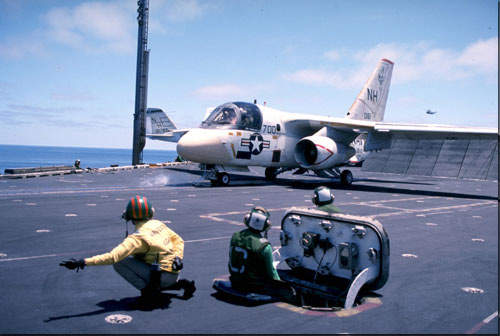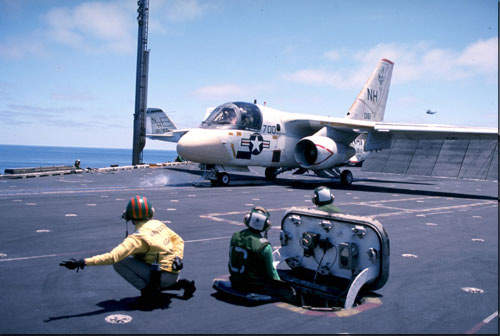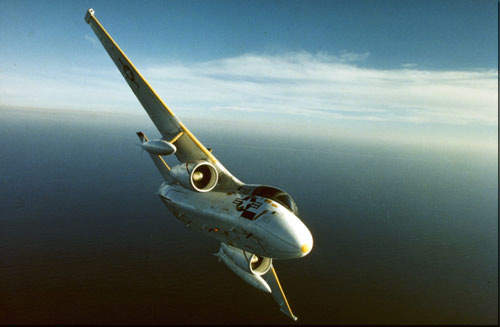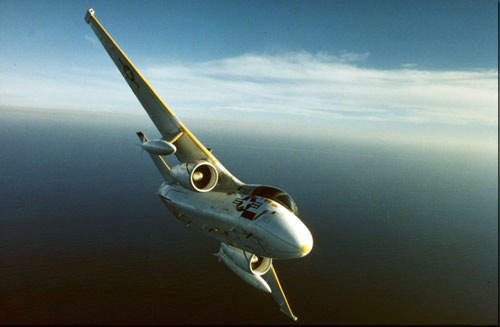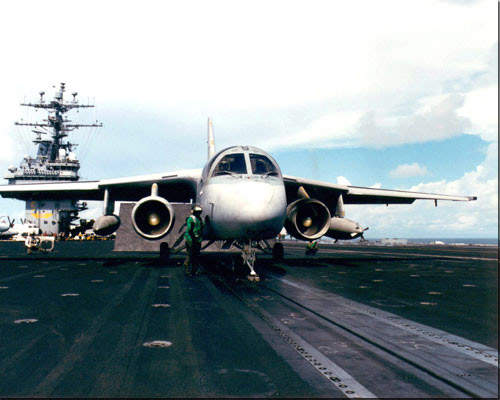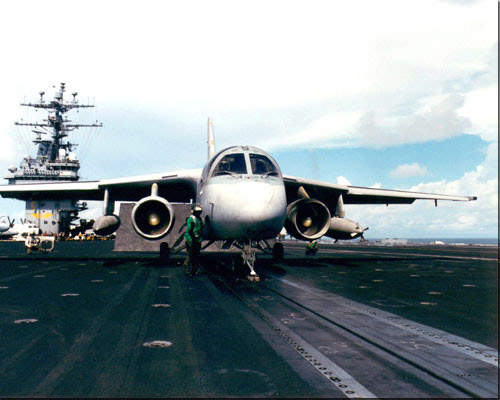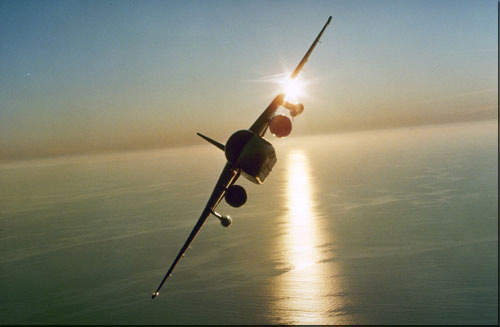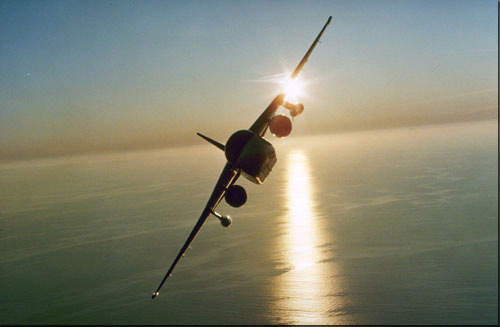The US Navy operated 113 Viking S-3B carrier-based aircraft in the anti-surface warfare role with secondary capability in land strike support and aerial refuelling. The aircraft had all-weather capability and was equipped for day and night surveillance, electronic warfare, and search and rescue missions. The S-3B was operational on US Navy Nimitz, Enterprise and Kitty Hawk carriers. The US Navy retired all the aircraft from fleet service by January 2009.
The S-3A Viking, designed for anti-submarine warfare, entered service in 1975. Between 1987 and 1994, all US Navy S-3A aircraft were converted to S-3B with new mission and weapon systems for the anti-surface warfare and other roles. The S-3B has combat proven precision targeting and over-the-horizon precision targeting capability.
With the change in roles brought about by the end of the Cold War and the reduced submarine threat, the S-3 underwent a major avionics and weapon systems upgrade programme and the crew was reduced from four to three – pilot, co-pilot / tactical coordinator (COTAC) and tactical coordinator (TACCO).
In March 2003, in support of Operation Iraqi Freedom, an S-3B Viking aircraft from Sea Control Squadron (VS) 38, the “Red Griffins”, became the first S-3B to attack an overland target with a laser-guided AGM-65E Maverick missile in combat. The aircraft was part of Carrier Wing 2 onboard USS Constellation.
In May 2003, an S-3B, designated “Navy One” for the occasion, transported then-President George Bush to visit the crew onboard USS Abraham Lincoln. It was the first time a US president had been in an aircraft making an “arrested” landing on a carrier.
S-3B Viking fuselage design
The fuselage is an all-metal fail-safe semi-monocoque design incorporating high-strength features for carrier-borne operations.
Two parallel beams between the tail hook and the forward landing gear form the keelson structure, which provides structural strength to withstand repeated loading of carrier catapult launches and arrester landings.
The all-metal fail-safe wings are folded upward and inward hydraulically for transfer and storage in the hangar deck.
The cockpit is fitted with frangible canopies allowing through-the-canopy crew ejection.
Maverick, SLAM/ER and Harpoon missiles
During 2001 and 2002 the US Navy carried out a development testing programme of the S-3B Maverick Plus system (MPS). MPS gives the S-3B the capability to carry the Raytheon AGM-65E laser-guided and AGM-65F infrared-guided Maverick missile and to control Boeing AGM-84H/K SLAM/ER stand-off land attack / extended-range missiles. 40 S-3B aircraft were fitted with the MPS (designated as AN/AGM-32B(V2)) by 2009.
Using the MPS, the S-3B Viking crew could control SLAM/ER missiles which had been launched from another aircraft in the post-launch phase. Terminal guidance control of the SLAM/ER Missile was through data link with the AN/AWW-13 extended-range data link pod. SLAM/ER is a day and night, all-weather, over-the-horizon precision strike land attack cruise missile with a range of more than 278km.
The Viking S-3B could also deploy the Boeing AGM-84 Harpoon anti-ship missile with an over the horizon range of more than 60nm.
The maximum weapons payload is 1,781kg and weapon options include missiles, torpedoes, rockets and bombs. The aircraft has split weapons bays with clamshell doors. Internally stored ordnance includes mk46/mk50 torpedoes, B57 nuclear depth charges, mk82 and mk36 bombs. Weapons that can be mounted externally under the wings include mk82, mk83, mk86 bombs, mk52, mk55, mk56, mk62, mk65 mines, LAU-10C, 68A and 69A rocket pods, SUU-44A flare pods, Rockeye mk20 rockets, and anti-ship and anti-surface missiles.
Viking avionics upgrades
To equip the S-3 for its new mission requirements a number of avionics and mission systems upgrade programmes were undertaken.
The carrier airborne inertial navigation systems II (CAINS II) upgrade involved the removal of existing CAINS, attitude heading reference system (AHRS), doppler radar and analogue flight instruments. The systems were replaced by the Honeywell H-764G EGI embedded global positioning system / inertial navigation system and digital electronic flight instruments (EFI). The upgrade was completed in late 2002.
Lockheed Martin was awarded a contract for the integration of communications and navigation systems, which began in 1998 and completed in 2004.
The Lockheed Martin (formerly Unisys) air data computer type AN/AYK-10A(V) was replaced with the AN/AYK-23 digital computer processor memory unit (CPMU), completed in September 2004. The upgrade of AN/ASW-33 digital flight data computer was completed by 2004. The DRS Technologies AN/USH-42 mission recorder has replaced the RO457 video signal recorder. AN/USH-42 records the ISAR radar, FLIR and mission avionics data.
A ground proximity warning system (GPWS) and low probability intercept altimeter were developed for the S-3.
In March 2006, the modification plan of 13 S-3Bs was approved by CNAF. The upgraded aircraft carry the low-altitude navigation targeting infrared for night (LANTIRN) system. The system was obtained from the retired F-14D Tomcat aircraft. The installations of LANTIRN and video transmission systems were completed by 2007.
Sonar sensors
Sonar sensors, including Hazeltine AN/ARR-78 sonobuoy receiver, Precision Echo analogue tape recorder AN/AQH-7 and Cubic AN/ARS-4 sonobuoy reference system, were removed from 40 S-3B aircraft between 1999 and 2002.
The S-3B is equipped with the Raytheon AN/APS-137(V)1 radar, which incorporates an inverse synthetic aperture radar (ISAR) mode, and an OR-263/AA forward-looking infrared system (FLIR).
S-3B Viking countermeasures
The electronic warfare suite includes an IBM AN/ALR-76 electronic support measures unit and a variant of the BAE Systems IDS (formerly Tracor) AN/ALE-39 chaff and flare dispenser.
General Electric TF-34-GE-400B engines
Two General Electric TF-34-GE-400B engines are pylon-mounted under the wings. The high bypass ratio turbofan engines are each rated at 41.25kN. The integral wing tanks have a usable fuel capacity of 7,192l. The aircraft can carry two jettisonable fuel tanks each with a capacity of 1,136l on the underwing pylons. A single point for pressure refuelling is installed on the starboard side of the fuselage.
An illuminated in-flight refuelling probe is installed in the top centre line of the fuselage.

